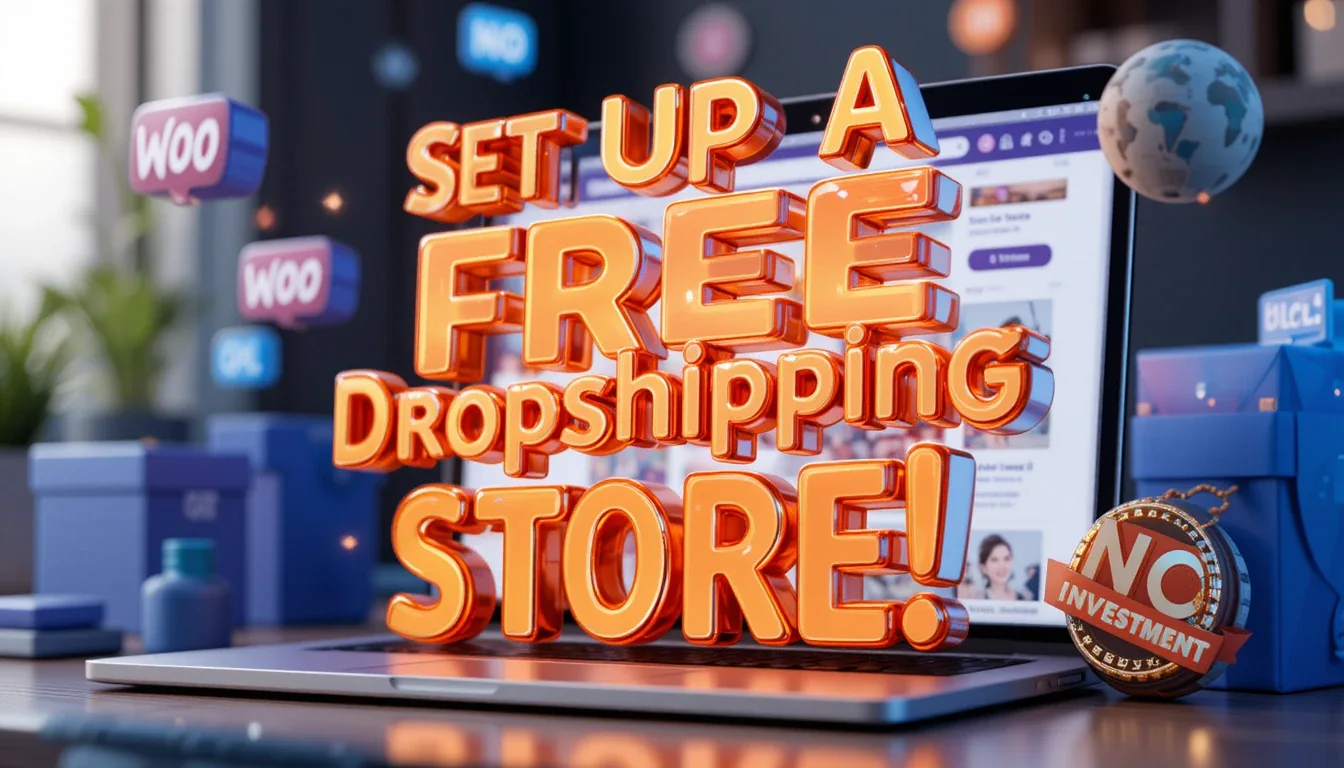How to Effortlessly Set Up a Dropshipping Store Using a Free GPL WooCommerce Plugin

Learn how to create your own dropshipping store today with a gratis GPL WooCommerce plugin. Take the first step in starting in e-commerce now!
Hello! Considering starting dropshipping? You might be surprised to learn that over 30% of eCommerce stores use this model, which allows businesses to sell products they don’t have to stock themselves. If you want to be a part of this growing trend without breaking the bank, then you’re in luck. Today, I’ll teach you how to set up a dropshipping store with a free GPL WooCommerce plugin. No fluff, just the good stuff..
Understanding GPL WooCommerce Plugins
What is WooCommerce Plugin? GPL is an acronym for General Public License which literally means that the software is free to use and modify. This fosters cost-effective tools for your store on WooCommerce, which is a well-known e-commerce platform that is built upon WordPress.
Some GPL plugins are freely available copyrighted premium resources (which can be legally questionable), but the vast majority are free in every sense of the word. Consider such tools like the base level ‘WooCommerce Dropshipping’ or other plugins offered in the WordPress repository. These tools allow easy connection with suppliers and effortless product management, making them ideal for a novice and budget-conscious user.
Step 1: Setting Up Your WordPress and WooCommerce Site
Before you can sell anything, you need a foundation. That starts with a WordPress site.
If First things first, if you do not have it yet, purchase a domain and the hosting for a website. Either Bluehost or SiteGround are good options. After purchasing, you must install WordPress on your host account. Most hosting accounts come with a control panel that allows for one click installs, so this should not take long. Once it is installed, open up your dashboard and navigate to your plugins page. Click on the ‘add new’ button and type ‘Woocommerce’ in the search box. Click on Install Now and then Activate. And just like that, your website is e-commerce capable.
Step 2: Choosing and Installing a Dropshipping Plugin
Now, let’s add the magic ingredient: a dropshipping plugin. The goal? Find one that’s free, GPL-licensed, and reliable.
Search for extensions such as “Spreadr App” or “WooCommerce Dropshipping” free version for product importation. Review the ratings and confirm that your preferred vendors (like AliExpress) are supported. For installation
- From your WordPress dashboard, go to Plugins > Add New.
- Search for your chosen plugin.
- Click Install Now, then Activate.
When I first started, I tried three plugins before settling on one that didn’t overwhelm me. Trust me, simplicity is key here.
Step 3: Configuring Your Dropshipping Plugin
Once activated, it’s time to connect the dots. Open the plugin settings from your dashboard.
Most plugins request that a supplier be linked and a common choice is AliExpress. It may be necessary to register for their dropshipping program (similar to AliExpress Dropshipping Center). After that, you can set parameters such as:
- Product Import Settings: Decide how many products to pull in.
- Order Automation: Set it to forward orders to suppliers automatically.
Certain plugins automatically incriminate the vendors’ prices in real time. Just imagine not having to deal with constantly adjusting prices every week. That would really change everything.
Step 4: Adding Products to Your Store
Here’s where the fun begins: stocking your virtual shelves. Using your plugin, import products directly from your supplier.
Concentrate on trendy, low-competitive products, such as spezailist electronics or unique home accessories. Change the description after importing the product (do not copy and paste) and upload images that are of good quality. One of my customers told me once that they abandoned my cart because of a blurry photo so I’ve certainly learned my lesson.
Pro Tip: Aim for products with good margins and reasonable shipping times. Nobody likes waiting a month for a $10 item.
Step 5: Setting Up Payment and Shipping
You’re almost ready to cash in. Let’s handle payments and shipping.
Enable and set up trusted payment options like PayPal or Stripe under Settings>Payments, especially since they’re free to use. For shipping purposes, select free or flat-rate shipping since suppliers handle fulfillment and it’s easier this way. Make sure to adjust sync settings for shipping details on your plugin to align with your supplier.
Step 6: Customizing Your Store’s Appearance
A good-looking store builds trust. Pick a free WooCommerce-compatible theme like Storefront from WordPress.org.
Head to Appearance > Customize to tweak colors, fonts, and layout. Add a logo if you’ve got one—it doesn’t have to be fancy. My first store used a $5 logo from Fiverr, and it worked just fine.
Step 7: Testing Your Store
Before you launch, test everything. Place a dummy order to see how it flows.
Is there a notification sent out to the supplier? Is the payment transaction completed without any issues? I previously bypassed this step and I received an email from a customer reporting a bug which was awkward to admit, but it was something I could have prevented. Deal with any snags now instead of later.
Common Challenges and How to Overcome Them
There’s always a bump or two in the road with dropshipping. Suppliers can let you down or customers might have unreasonable standards.
If a supplier is running late, be sure to talk with your buyer—being truthful helps. For returns, make sure to explain your policy beforehand (this is usually the case, but double check). And manage your customer’s expectations: make sure to warn them that shipping may take longer with dropshipping..
FAQ Section
What is a GPL WooCommerce plugin?
It’s an open-source plugin licensed under the General Public License, free to use or tweak for your WooCommerce store.
Is it legal to use GPL plugins for dropshipping?
Yes, if they’re legitimately free or you’ve got rights to use them. Avoid shady redistributed premium plugins.
How do I choose the best dropshipping plugin?
Look for ease of use, supplier compatibility, and good reviews. Start with free options to test the waters.
Can I use multiple suppliers with one plugin?
Some plugins support this—check the features before installing.
How do I handle returns in dropshipping?
Coordinate with your supplier; most offer return policies you can pass on to customers.
Conclusion
Setting up a dropshipping store with a GPL WooCommerce plugin is simpler than you might think. Install WordPress, add WooCommerce, pick a free plugin, and follow these steps to get rolling. You’ll be selling in no time—without breaking the bank.
Ready to start your e-commerce journey? Launch your store today and explore our guide on choosing dropshipping products for more tips. Got questions? Drop them below—I’d love to help!
More Topics
